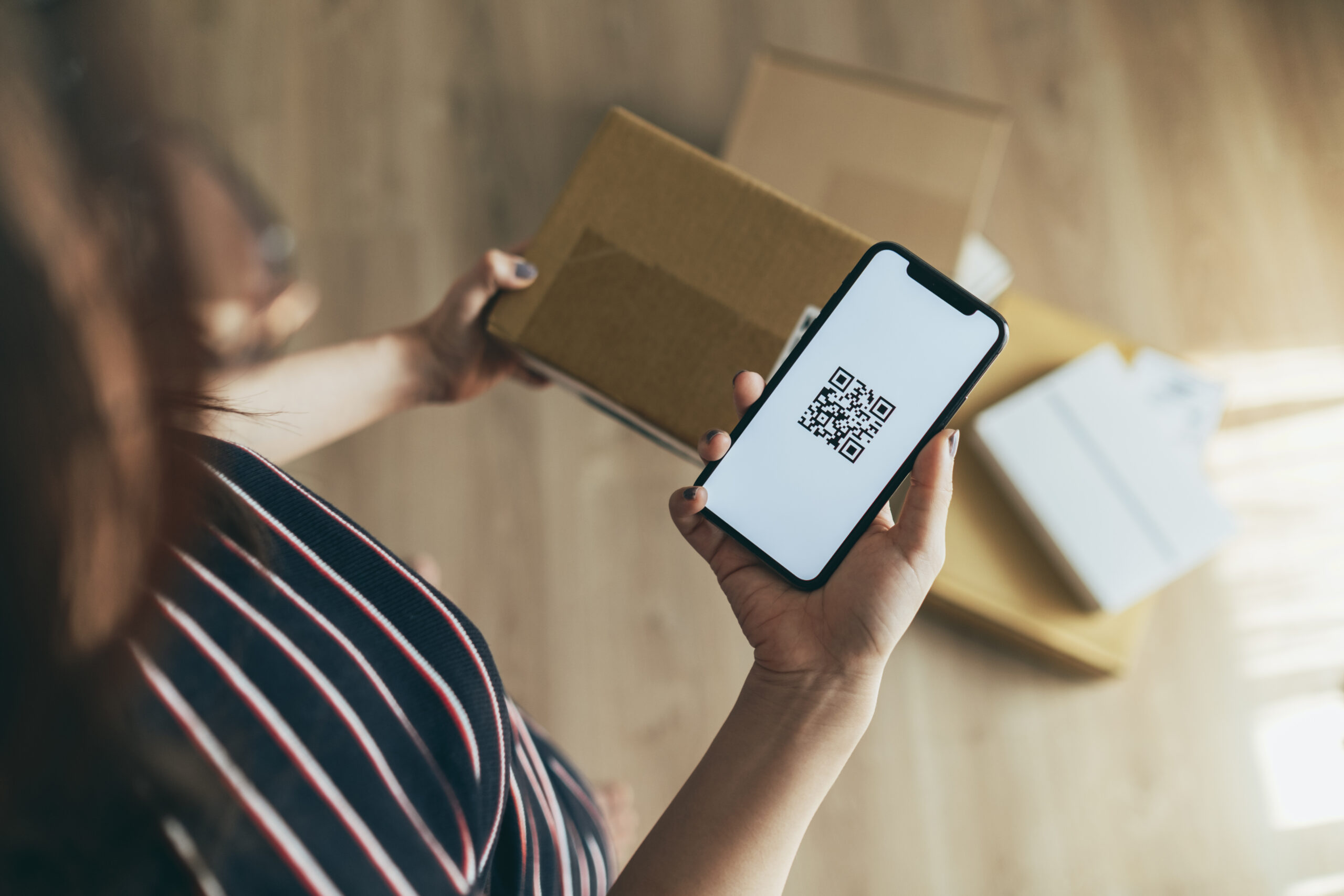A guide to connected packaging

Competitive advantage is critical for online retailers and ecommerce businesses who are looking to get ahead in a saturated market. Capturing the hearts and minds of shoppers is often key to securing business…
In our latest unboxing survey, 40% consumers reported that branded packaging can influence them to buy again. This highlights how transit packaging can play an important role in the customer experience.
When you think about it, the packaging materials online retailers use is often the first physical touchpoint in their customer journey. So, it makes sense for retailers to leverage this opportunity and make the most of it. In the digital era we inhabit, simple branding may no longer be enough, while it creates visual impact, consumers are looking for experiences that really stand out. What’s the next step? Enter, connected packaging…
To align their physical and digital customer experiences, online, multi and omni-channel retailers can start considering connected packaging. It presents an all new creative opportunity for retailers to gain a competitive edge and represents a new trend in retail technology.
Blog Contents
- What is connected packaging?
- What’s the difference between connected packaging, intelligent packaging, and smart packaging?
- Providing consumers with connection – how connected packaging can enhance the unboxing experience
- Leveraging connected packaging to develop long-lasting customer relationships
- Connected packaging examples – how you can deliver a wow-moment with your packaging
- Help delivering a memorable unboxing experience with connected packaging

What is connected packaging?
Connected packaging is packaging that can be transformed into a digital experience. This is achieved by printing packaging with QR codes, barcodes or images that can be scanned with a smart device that launches a digital experience in a browser-based app.
Also classed as smart packaging, this type of packaging can also feature RFID or NFC technology where users can tap their phone against packaging to interact with it.

What’s the difference between connected packaging, intelligent packaging, and smart packaging?
These terms might seem interchangeable – they all mean the same thing, right? Well, not exactly.
As mentioned, connected packaging is when you leverage technology like QR codes or NFC technology to create an interactive (or connecting) experience for consumers.
Intelligent packaging is used to monitor the conditions of packed products, such as food, with sensors. It’s particularly useful in cold chain industries, where temperature sensitivity of products is critical.
Smart packaging is an umbrella term for any packaging that has enhanced functions, so both connected packaging and intelligent packaging could be referred to by this name!

Providing consumers with connection – how connected packaging can enhance the unboxing experience
With consumer behavior perpetually changing, connected packaging presents new opportunities to provide online shoppers with a new way to connect with retailer brands. It’s a way to communicate and engage on top of standard branding practices.
In the age of social media, there are millions of unboxing videos on the internet. The ritual of unboxing a new product or opening a haul is everywhere. Google estimates that people have spent so much time watching unboxing videos, its equivalent to watching Love Actually 20 million times.
Who wouldn’t want a slice of that pie? A positive unboxing experience can not only reach the customer who opened the parcel but could reach a huge audience if they post their encounter online. Using connected packaging is certainly a way for retailers to stand out. Plus, it could be great tool for brands who use influencer marketing as part of their strategy.

Leveraging connected packaging to build long-lasting customer relationships
Connected packaging not only holds the potential to be a new marketing opportunity, but it also offers online retailers a way to further understand the needs and wants of their customers, as they interact with their packaging. Just like loyalty cards, connected packaging is a great way to collect marketing data!
Using this type of packaging, you can look at measuring interactions, engagement and conversion of a particular campaign. Plus, connected packaging allows retailers to think big picture too and capture information about trends, brand saliency and efficacy, as well as spend optimisation and efficiency.
The data collected can help retail brands to build long-standing relationships with consumers and drive repeat sales. Plus, consumers are receptive to connecting with brands through packaging and there’s evidence to back this up…
- 49% shoppers think that their shopping experience would be better if retailers offered promotions related to past purchases.
- 65% UK consumers said they’d be willing to take the time to work out how to engage with a product via their smartphone.
- 45% of shoppers in the UK say they expect to interact more with connected packaging in the near future.
- 62% UK buyers said they are more likely to buy a connected product if it links them to a loyalty scheme

Connected packaging examples – how you can deliver a wow-moment with your packaging
So, once a consumer has scanned or interacted with your packaging, how can you deliver that wow-moment?
Well, the experience your connected packaging launches really can be as simple or as complex as you want it to be. Connected packaging examples include using a QR code to launch a simple web page, or even a full augmented reality experience. For example, after scanning, you could launch a game that allows customers to win prizes or just direct them to instructions on how to recycle the packaging your product has been shipped in.
But what do consumers want from connected packaging? In essence, they want to get added value from their experience.
In the UK, consumers have a big preference for discount on future purchases, with 85% of people telling SharpEnd this is what they desire. Instructions for use and customer support were also reported by consumers as content they were interested in. 75% consumers were also interested in how to recycle a product. These consumer preferences highlight that the experience brands deliver is as much about informational transparency, as it is about repeat purchases.

Help delivering a memorable unboxing experience with connected packaging
Interested in exploring the potential of connected packaging? The Innovation Lab team at Macfarlane Packaging are experts in packaging design and have the capability to support connected packaging projects.
For more information, get in touch with us today or click to take a virtual tour of our Innovation Lab facility today.
